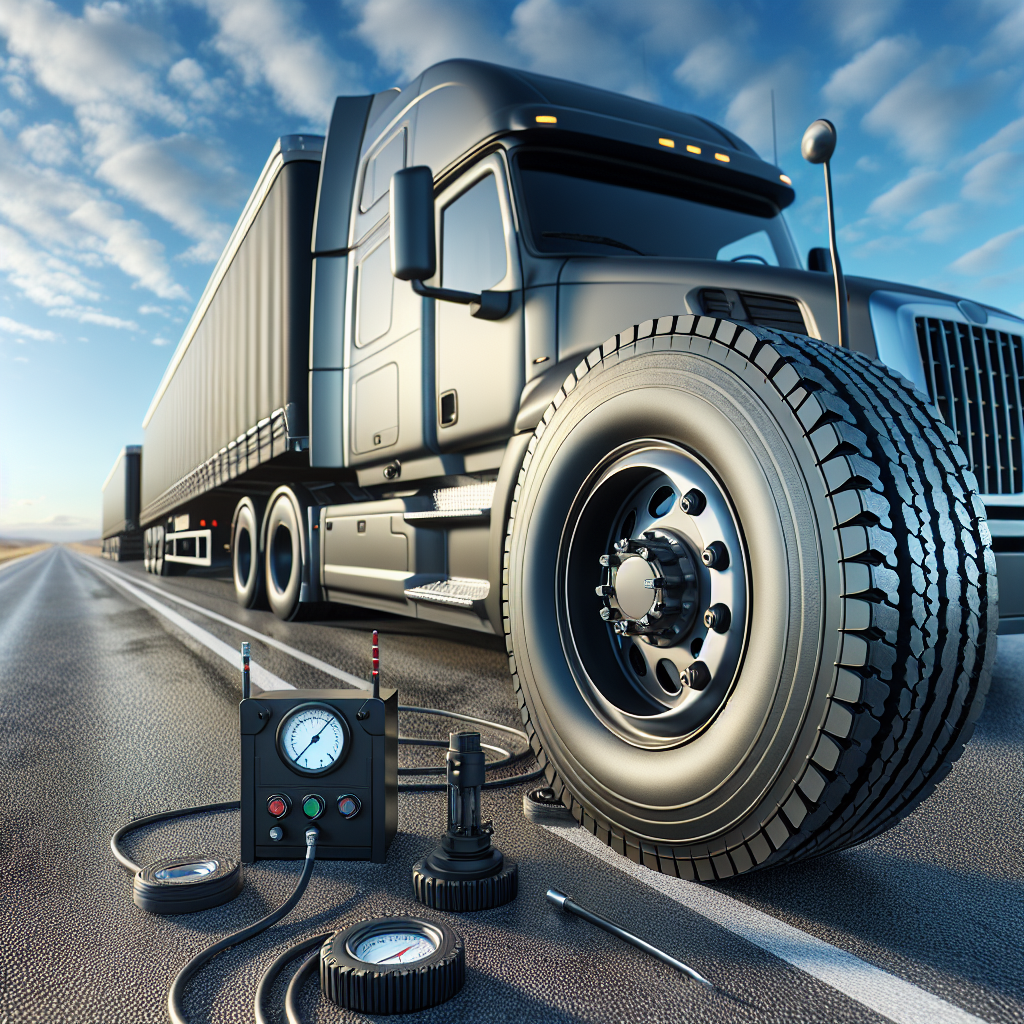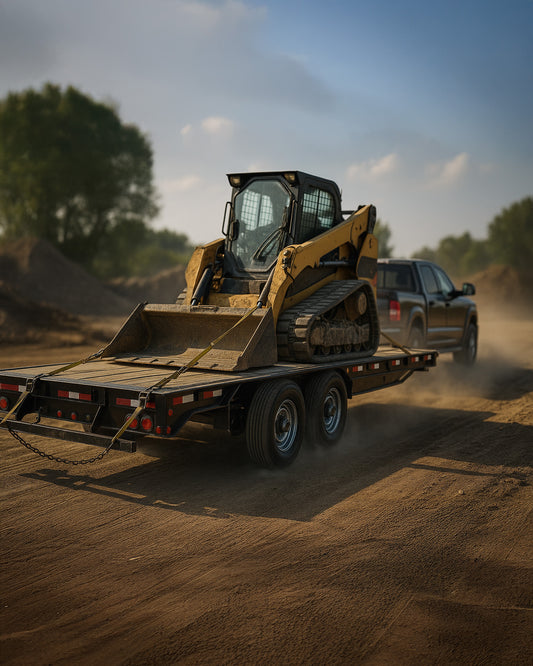

Maintaining optimal tire pressure is crucial for the safety and efficiency of any semi-trailer. A semi trailer tire pressure monitoring system (TPMS) plays an indispensable role in achieving this goal. By continuously monitoring tire pressure and temperature, these advanced systems provide real-time data to operators, enabling them to make informed decisions while on the road.
Understanding how a TPMS operates can significantly enhance the performance of your trailer. Here’s what you need to know:
- Real-Time Monitoring: The system utilizes sensors to track tire pressure and temperature, sending alerts if any readings fall outside safe parameters.
- Data Accuracy: High-quality monitoring systems provide precise data, reducing the risk of blowouts and improving fuel efficiency.
- Maintenance Alerts: Many TPMS solutions can notify users of potential issues before they escalate, allowing for timely maintenance.
- Ease of Use: Most systems are user-friendly, displaying information clearly so that operators can easily assess their trailer's condition.
By integrating a semi trailer tire pressure monitoring system into your operations, you not only enhance safety but also ensure optimal performance and efficiency. Tow with peace of mind, knowing that trailerwatchdog is standing guard. For more information on how to implement a smart trailer solution, visit trailerwatchdog.com.
Benefits of Tire Pressure Monitoring for Trailers

Implementing a tire pressure monitoring system (TPMS) in your trailer offers numerous advantages that contribute to safer and more efficient operations on the road. Here are some key benefits:
- Enhanced Safety: Proper tire pressure is essential for maintaining traction and stability. A TPMS alerts drivers to low or high pressure conditions, helping to prevent blowouts and accidents.
- Improved Fuel Efficiency: Maintaining optimal tire pressure can lead to better fuel economy. Under-inflated tires create more rolling resistance, which can increase fuel consumption. A TPMS helps ensure that tires are always at the correct pressure.
- Extended Tire Life: Consistent monitoring of tire pressure can extend the lifespan of your tires. By avoiding excessive wear and tear due to improper inflation, you can save on tire replacement costs.
- Reduced Downtime: With real-time alerts, drivers can address tire issues before they lead to major breakdowns. This proactive approach minimizes downtime and keeps your operations running smoothly.
- Environmental Impact: By optimizing tire pressure, you not only save on fuel costs but also reduce your carbon footprint. Efficient fuel usage translates to lower emissions, contributing to a greener environment.
Incorporating a TPMS into your trailer management strategy can lead to significant operational enhancements and cost savings.
Essential Features of an Effective Monitoring System
When selecting a tire pressure monitoring system (TPMS) for your trailer, it is crucial to consider several essential features that contribute to its effectiveness. A robust monitoring system should include the following:
- Real-Time Monitoring: An effective TPMS provides continuous, real-time data on tire pressure and temperature, allowing for immediate awareness of any issues as they arise.
- Alerts and Notifications: Look for systems that offer customizable alerts for low or high tire pressure and temperature changes. These notifications can be delivered through mobile apps or onboard displays, ensuring drivers stay informed.
- Durable Sensors: Quality monitoring systems utilize durable sensors that can withstand harsh road conditions and environmental factors. Ensure the sensors are weather-resistant and designed for long-term use.
- Easy Installation: Opt for a TPMS that is simple to install, whether it’s through direct tire valve attachment or internal tire monitoring. An effective system should minimize downtime during installation.
- Data Logging and Analysis: Advanced systems provide data logging capabilities that allow for historical analysis of tire performance over time. This feature helps identify patterns and trends, leading to better maintenance decisions.
- Integration with Fleet Management Systems: For businesses managing multiple trailers, integration with existing fleet management software can streamline operations and enhance overall monitoring efficiency.
By ensuring your TPMS includes these essential features, you can maximize safety and performance on the road.
Protect your trailer
How to Maintain Your Tire Pressure Monitoring System

Maintaining your semi trailer tire pressure monitoring system is vital for ensuring its longevity and effectiveness. Proper upkeep not only enhances safety but also optimizes performance and fuel efficiency. Here are some essential maintenance tips:
- Regular Calibration: Ensure your TPMS is calibrated correctly according to the manufacturer’s guidelines. Regular calibration helps maintain accurate readings, which is crucial for preventing tire-related issues.
- Check Battery Life: Many TPMS sensors are battery-operated. Regularly check the battery life and replace batteries as necessary to avoid unexpected failures during operation.
- Inspect Sensors: Periodically inspect the sensors for any signs of damage or wear. Look for cracks, corrosion, or loose fittings. Clean the sensors gently to remove debris that may interfere with their function.
- Update Software: If your TPMS is equipped with software, ensure it is updated to the latest version. Updates often include enhancements and bug fixes that can improve system performance.
- Review Data Logs: Regularly review the data logs provided by your TPMS. Analyzing this data can help you identify trends and irregularities in tire performance, allowing you to take proactive measures.
- Consult Professionals: When in doubt, consult with professionals who specialize in trailer maintenance. They can provide valuable insights and perform thorough checks on your TPMS.
By following these maintenance tips, you can ensure your tire pressure monitoring system remains reliable and effective, helping you stay safe on the road.
Integrating Technology for Optimal Tire Performance

In today's fast-paced world, integrating technology into your semi trailer tire pressure monitoring system can significantly enhance tire performance and overall safety. The advent of smart technology offers innovative solutions that not only simplify monitoring but also provide real-time data to improve your trailer's efficiency.
Here are some key technologies that can be integrated:
- Real-Time Monitoring: Advanced TPMS solutions provide real-time tire pressure and temperature data directly to your smartphone or dashboard. This immediate access allows for timely adjustments, reducing the risk of tire blowouts and improving fuel economy.
- Data Analytics: Utilizing data analytics tools can help in understanding tire performance over time. By analyzing patterns in tire pressure and temperature, you can make informed decisions about maintenance schedules and tire replacements.
- Alerts and Notifications: Many modern systems come equipped with alert features that notify you immediately of any anomalies in tire pressure or temperature. This proactive approach helps prevent potential failures before they occur.
- Integration with Fleet Management Systems: For companies operating multiple trailers, integrating TPMS with fleet management software can streamline operations. This allows for centralized monitoring and management of all trailers, ensuring optimal performance across the board.
- Mobile Applications: Many TPMS providers offer mobile apps that allow you to monitor tire conditions on-the-go. These apps often include features such as historical data tracking, reminders for tire maintenance, and even tips for optimizing tire life.
By embracing these technological advancements, trailer owners can maximize tire performance, extend tire life, and ensure a safer journey on the road.
Choosing the Right Monitoring System for Your Fleet

When it comes to managing a fleet, selecting the right semi trailer tire pressure monitoring system is crucial for ensuring safety, efficiency, and cost-effectiveness. With various options available in the market, it can be overwhelming to determine which system best meets your fleet's needs. Here are some essential factors to consider:
- Compatibility: Ensure that the monitoring system you choose is compatible with your existing trailers. Some systems are designed specifically for certain types of trailers, so it’s important to verify compatibility before making a purchase.
- Data Accuracy: Look for systems that provide reliable and accurate data. High-quality sensors that measure both tire pressure and temperature can help prevent catastrophic failures and improve overall fleet performance.
- User-Friendly Interface: A good monitoring system should have an intuitive interface, allowing fleet managers to easily access and interpret data. This will facilitate quicker decision-making and enhance operational efficiency.
- Real-Time Alerts: Choose a system that offers real-time notifications regarding tire conditions. This feature allows for immediate action to be taken if tire pressure or temperature deviates from the optimal range.
- Support and Maintenance: Consider the level of customer support and maintenance options provided by the manufacturer. A robust support system can make a significant difference in ensuring the longevity of your monitoring system.
Investing in the right trailer monitoring system can lead to improved safety and reduced operational costs. To take the next step towards optimizing your fleet's performance, tow with peace of mind, knowing that TrailerWatchdog is standing guard.




